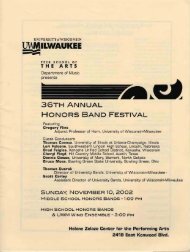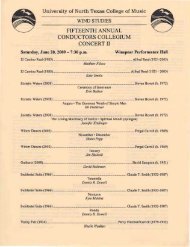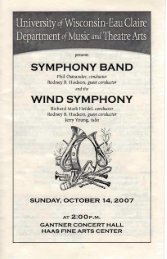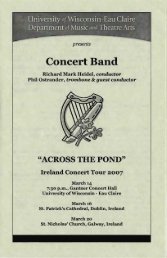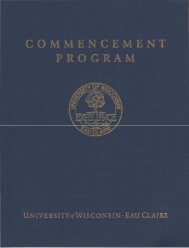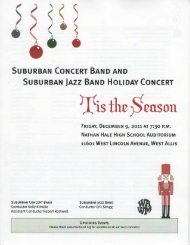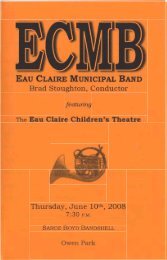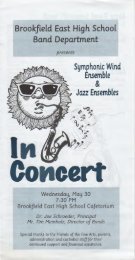about alexandre tharaud - Jim Skaleski
about alexandre tharaud - Jim Skaleski
about alexandre tharaud - Jim Skaleski
You also want an ePaper? Increase the reach of your titles
YUMPU automatically turns print PDFs into web optimized ePapers that Google loves.
The manuscript is dated 1914 -1917, so it is difficult to determine if any<br />
significant portions of the work were written before the war. At any rate,<br />
Ravel intended the composition as a memorial to his friends; while there<br />
are moments of lightness and humor in this music, which prompted some<br />
to criticize the composer's supposedly irreverent attitude toward death,<br />
beneath the flashes of wit one hears profound melancholy tones in the<br />
returning soldier's tribute to his fallen comrades.<br />
Dedicated to Lieutenant Jacques Charlot, who worked for Ravel's<br />
publisher Durand, the Prelude is a veritable whirlpool of sound, the<br />
sensation of fluidity created by elegantly executed triplet figurations.<br />
A triplet figure also appears in the noble, marmoreal Fugue, dedicated to<br />
Lieutenant Jean Cruppi, whose mother had played an important role in<br />
the production of L'Heure espagnole. Deceptively simple, this movement<br />
is a demanding polyphonic construction which Ravel executes with his<br />
characteristically brilliant nonchalance.<br />
The Forlane, the French variant of an old Italian dance, bears a dedication<br />
to Lieutenant Gabriel Deluc, a friend from St-Jean-de-Luz, in Ravel's<br />
native Basque region. As Vladimir Jankelevitch remarked, this noble<br />
and melancholy movement is like a lullaby. However, there is something<br />
slightly jarring and manic in this lullaby, and the manic energy turns into a<br />
nervous - but infinitely charming - narrative, the Rigaudon.<br />
Dedicated to Ravel's St-Jean-de-Luz friends Pierre and Pascal Gaudin, two<br />
brothers who were killed by the same shell on their first day of combat,<br />
the Rigaudon is named after an ancient Provenc;al dance. This movement<br />
opens with a poignant figuration, which, recurring with the power of an<br />
irresistible fixation, defines the identity of the entire piece.<br />
Ravel dedicated the Menuet to Jean Dreyfus, step-brother of the<br />
composer and critic Roland-Manuel. Unfolding with the calm pace of an<br />
unassuming narrative, this movement, despite its apparently peaceful<br />
simplicity, unveils, if only for a moment, feelings of mournful foreboding.<br />
The final movement, Toccata is dedicated to Captain Joseph de Marliave,<br />
husband of Marguerite Long and devoted admirer of Faure's music. In this<br />
movement, the half-hidden disquietude of the entire composition finally<br />
comes to the fore. While the percussive, obsessively recurring figurations<br />
may define this movement as a composition dominated by technical<br />
demands, there are, trapped in a carapace of busy, hammering gestures,<br />
enchanting moments of quiet lyricism.<br />
Marguerite Long gave the first performance of Le Tombeau de Couperin<br />
in 1919; that year, Ravel completed his brilliant orchestration of the<br />
Prelude, Foriane, Minuet and Rigaudon, adding splendid orchestral color<br />
to these exquisite musical creations.<br />
SOURCE: ALL MUSIC GUIDE<br />
7




